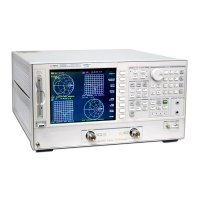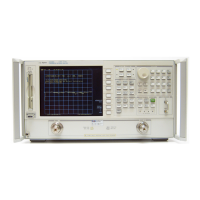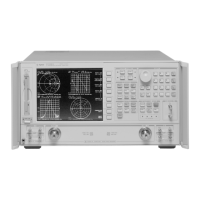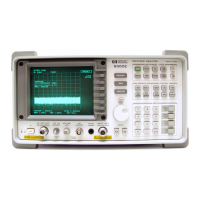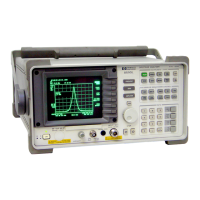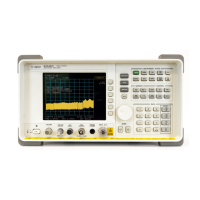Index
Index-11
transforming CW time measurements
into the frequency domain, 3-22
forward transform measurements,
3-22
transmission measurements in time
domain low pass, 3-19
interpreting the low pass step
transmission response horizontal
axis
, 3-20
interpreting the low pass step
transmission response vertical
axis
, 3-20
measuring separate transmission
paths through the test device
using low pass impulse mode
,
3-20
measuring small signal transient
response using low pass step
,
3-19
transmission measurements using
bandpass mode
, 3-14
interpreting the bandpass
transmission response horizontal
axis
, 3-14
interpreting the bandpass
transmission response vertical
axis
, 3-14
transmission measurements, response
and isolation error correction
, 6-17
transmission measurements, response
error correction
, 6-14
transmission response measurements,
making, 3-5
TRL calibration, performing, 6-52
TRL error correction
assigning standards to various TRL
classes
, 6-51
label the calibration kit, 6-51
label the classes, 6-51
performing the TRL calibration, 6-52
TRL error-correction, 6-50
creating a user-defined TRL calibration
kit
, 6-50
TRL options, 7-77
TRL terminology, 7-69
TRL* error model, 7-69
TRL*/LRM* calibration, 7-68
fabricating and defining calibration
standards for TRL/LRM
, 7-74
how TRL*/LRM* works, 7-69
improving raw source match and load
match for TRL*/LRM*
calibration
, 7-72
isolation, 7-70
source match and load match, 7-71
TRL calibration procedure, 7-73
TRL options, 7-77
TRL standards, requirements, 7-73
TRL terminology, 7-69
TRL* error model, 7-69
TRL*/LRM* two-port calibration, 7-57
TRM error correction, 6-54
assigning standards to various TRM
classes
, 6-55
creating a user-defined TRM
calibration kit, 6-54
labeling the calibration kit, 6-55
labeling the classes, 6-55
modifying the standard definitions,
6-54
performing the TRM calibration, 6-56
TTL
I/O menu, 1-110
input decision making, 1-111
out menu, 1-114
output for controlling peripherals,
1-110
tuned receiver mode, 2-26, 2-28, 7-86
in-depth description, 7-87
test setup, typical, 7-87
two sources
addressing and configuring, 2-29
two-port calibration, full, 7-57
two-port calibration, TRL*/LRM*, 7-57
two-port error model, 7-48
type-N connector sex
clarifying, 6-4
types of error correction, 6-10
U
uncoupling display markers, 1-31
understanding
harmonic operation, 1-58
spur avoidance, 5-18
understanding power ranges, 7-10
understanding S-parameters, 7-21
upper stopband parameters, 1-73
using continuous correction mode, 6-38
using direct sampler access
configurations
, 5-16
noise floor plot, 5-17
using external calibration, 5-12
using fast 2-port calibration, 5-12
using sample-and-sweep correction
mode
, 6-36
using swept list mode, 5-9
detecting IF delay, 5-10
using the parallel port, 7-81
copy mode, 7-81
GPIO mode, 7-81
V
vector error-correction, 7-8
verification, performance, 5-5
verifying performance, 7-66
vertical axis, 3-13, 3-14, 3-17, 3-20,
3-22
viewing a single measurement channel,
5-12
viewing plot files on a PC, 4-20
using AmiPro, 4-21
using Freelance, 4-21
W
what you can save to a computer, 4-35
what you can save to a floppy disk, 4-35
what you can save to the analyzer’s
internal memory
, 4-34
widening the system bandwidth, 5-11
windowing, 3-27
finite impulse width (or rise time), 3-27
sidelobes, 3-27
